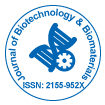Notre groupe organise plus de 3 000 séries de conférences Événements chaque année aux États-Unis, en Europe et en Europe. Asie avec le soutien de 1 000 autres Sociétés scientifiques et publie plus de 700 Open Access Revues qui contiennent plus de 50 000 personnalités éminentes, des scientifiques réputés en tant que membres du comité de rédaction.
Les revues en libre accès gagnent plus de lecteurs et de citations
700 revues et 15 000 000 de lecteurs Chaque revue attire plus de 25 000 lecteurs
Indexé dans
- Index Copernic
- Google Scholar
- Sherpa Roméo
- Ouvrir la porte J
- JournalSeek de génamique
- Clés académiques
- RechercheBible
- Infrastructure nationale du savoir de Chine (CNKI)
- Accès à la recherche mondiale en ligne sur l'agriculture (AGORA)
- Bibliothèque de revues électroniques
- Recherche de référence
- Université Hamdard
- EBSCO AZ
- OCLC-WorldCat
- Catalogue en ligne SWB
- Bibliothèque virtuelle de biologie (vifabio)
- Publons
- Fondation genevoise pour l'enseignement et la recherche médicale
- Euro Pub
- ICMJE
Liens utiles
Revues en libre accès
Partager cette page
Abstrait
Characterization, Properties and Applications of Nonthermal Plasma: A Novel Pulsed-Based Option
James R Ferrell1, Aleksandr S Galov2, Valery A Gostev2, Bruce A Banks3, Steven P Weeks4, Judith A Fulton5 and Christopher J Woolverton6
The glow discharge from a novel spark-based nonthermal plasma generator is described and characterized using spectrophotometry, radiometry and gas detectors. Spectral information identified ultraviolet radiation within the plasma discharge. High levels of reactive oxygen and nitrogenous species were also detected within the analyzed plasma. The plasma discharge is found to have a significant germicidal effect on Gram-positive bacteria, independent of temperature increase. The ultraviolet radiation and ionized gaseous species are found to contribute to this observed effect, synergistically. Plasma filtration reduced germicidal survivability significantly. The liquid environment in which bacterial cells were exposed to the nonthermal plasma also was important, when determining the efficacy of nonthermal plasma, as a germicidal agent. Staphylococcus aureus cultures exposed to nonthermal plasma for two minutes within low nutrient sources, such as water or phosphate-buffered saline, had very low survival. Cultures exposed to the same plasma interval in nutrient rich liquids tolerated the plasma exposure better, and survived at higher numbers. This plasma discharge is highly bactericidal, due to the high concentrations of known antimicrobial agents, but its effectiveness is subject to a synergistic effect, that depends upon the surrounding environment.
Revues par sujet
- Agriculture et Aquaculture
- Biochimie
- Chimie
- Food & Nutrition
- Génétique et biologie moléculaire
- Géologie et sciences de la Terre
- Immunologie et microbiologie
- Ingénierie
- La science des matériaux
- Le physique
- Science générale
- Sciences cliniques
- Sciences environnementales
- Sciences médicales
- Sciences pharmaceutiques
- Sciences sociales et politiques
- Sciences vétérinaires
- Soins infirmiers et soins de santé
Revues cliniques et médicales
- Allaitement
- Anesthésiologie
- Biologie moléculaire
- Cardiologie
- Chirurgie
- Dentisterie
- Dermatologie
- Diabète et endocrinologie
- Gastro-entérologie
- Immunologie
- La génétique
- Maladies infectieuses
- Médecine
- Microbiologie
- Neurologie
- Oncologie
- Ophtalmologie
- Pédiatrie
- Recherche clinique
- Soins de santé
- Toxicologie

 English
English  Spanish
Spanish  Chinese
Chinese  Russian
Russian  German
German  Japanese
Japanese  Portuguese
Portuguese  Hindi
Hindi